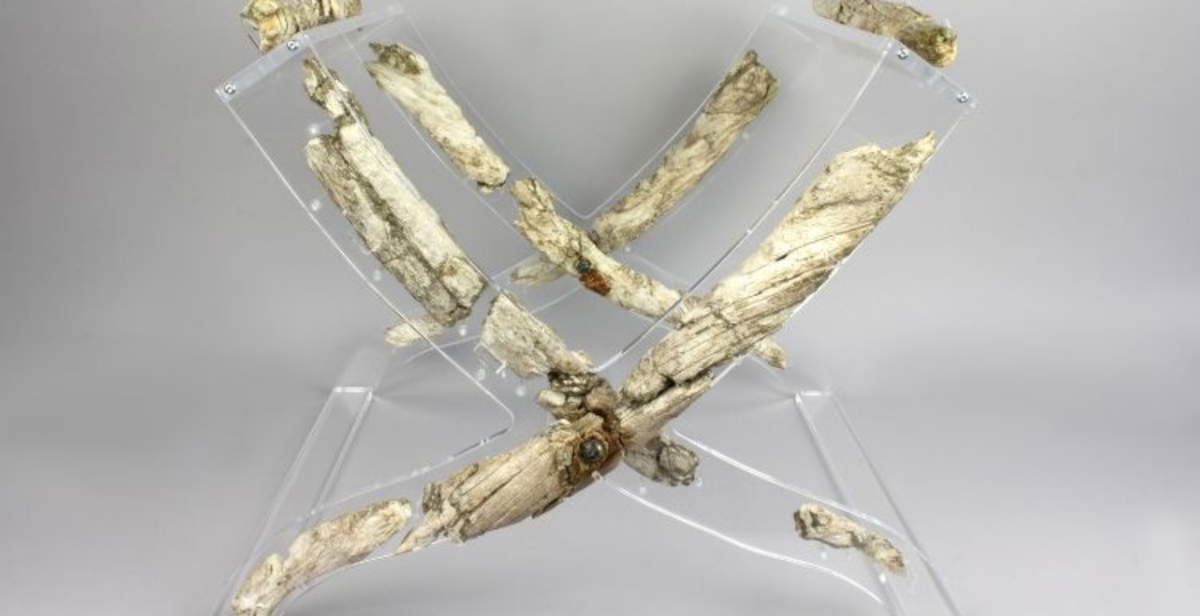A fragment of history is coming back to life at the Civic Archaeological Museum of Bologna: it is the ivory folding stool from “Tomb 173” of ancient Felsina, one of the rarest and most fascinating finds of the entire Etruscan heritage. After careful conservation work lasting eight months, the object has been returned to the scientific community and the general public with a new interactive and fully accessible multimedia display.
The return of the artifact is part of the project In the Lands of the Rasna, promoted by the Bologna Civic Museums Sector in collaboration with the Rotary Club of Bologna Est, which supported the intervention on the occasion of its 60th anniversary. The work was supervised by archaeologists Federica Guidi and Marinella Marchesi and entrusted to the restoration firm Kriterion.


The ivory folding stool, datable to the late 6th and early 5th centuries BC, is an artifact of extraordinary refinement. The piece of furniture consists of two pairs of legs arranged in an X shape, joined by metal pivots and side crosspieces: a system reminiscent of the sellæ curules, folding seats of oriental tradition that became in ancient Rome a symbol of civic and magisterial power. The hypothetical reconstruction includes a leather seat, now lost. The most striking detail is the material: the entire stool was covered in worked ivory slabs, a choice that makes it an object out of scale by the usual standards of northern Etruria. Ivory was a luxury good, often imported from Africa or Asia, used for small cult objects or personal ornaments. To employ it for a piece of furniture, and moreover for everyday use, suggests the exceptional rank of the deceased.
The hypothesis advanced by scholars is that the owner of the tomb may have been a high-ranking magistrate of the Felsine Etruscan community, whose authority was also manifested through material symbols such as this. Mediterranean influence, perhaps Greek or Anatolian, in the choice of form and materials is not ruled out.
The tomb from which the stool came was discovered in 1887 by Edoardo Brizio, the museum’s director at the time, during excavations in preparation for the 1888 Esposizione Emiliana. The discovery took place in the area now occupied by the Giardini Margherita, which at the time returned numerous Etruscan tombs. “Tomb 173” immediately stood out for the richness of its furnishings: next to the stool were figured Attic vases, metal objects and other valuable artifacts, some of which are now preserved in the museum’s storerooms.
At the time, the furnishings were partially reconstructed, and as early as the 20th century they underwent initial restoration, unfortunately with outdated materials and techniques. The glues and joints used at the time had compromised the structural balance of the artifact, necessitating a comprehensive overhaul and securing.
The restoration carried out by Kriterion involved all the existing fragments: disassembly, mechanical cleaning, photographic and microscopic documentation, selective consolidation with compatible products, and final reassembly on a new invisible plexiglass support. This system now allows the museum to move the object without jeopardizing its stability, ensuring its visibility on all sides.
Along with the conservation work, the project also produced important scientific results. Archeozoological analyses conducted by Fabio Fiori of the ArcheoLaBio Center at the University of Bologna confirmed the ivory’s animal origin, attributing it with high probability to an elephant tusk. LC-MS/MS analysis underway at the University of Turin should soon provide details on the geographic origin of the find, helping to reconstruct the trade and cultural routes that brought such exotic materials to the Po Valley. The study of the metal bushings and pins, decorated with silver foils, also proved particularly interesting: elements that speak not only of aesthetics, but also of advanced technical knowledge, the result of a highly specialized craftsmanship tradition.
With the conclusion of the restoration, the stool has been relocated to Room X of the museum, within a renovated exhibit designed to enhance public enjoyment. The new exhibition apparatus consists of an air-conditioned display case, flanked by a multimedia touch station, created by Genera, which takes visitors on an interactive journey divided into three sections.
The first narrates the stages of the restoration with a video subtitled and translated into LIS and English, making the content usable even by people who are deaf or hard of hearing. The second reconstructs Tomb 173 in 3D, showing the original location of the stool and other objects in the trousseau. The third, which is nearing completion, will offer in-depth historical, technical and symbolic content. L new mode of museum storytelling aims to go beyond the simple concept of “display,” offering the public a participatory experience in which the ancient object is told, understood and experienced.
 |
| Bologna restores precious Etruscan ivory stool |
Warning: the translation into English of the original Italian article was created using automatic tools. We undertake to review all articles, but we do not guarantee the total absence of inaccuracies in the translation due to the program. You can find the original by clicking on the ITA button. If you find any mistake,please contact us.